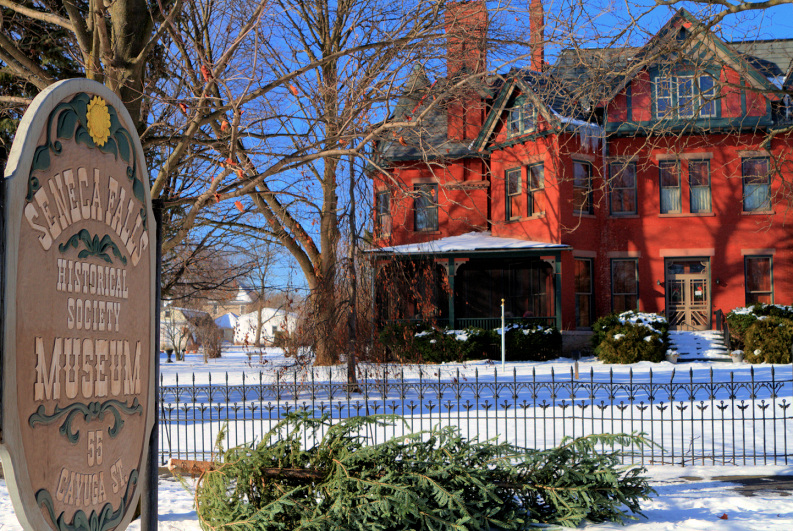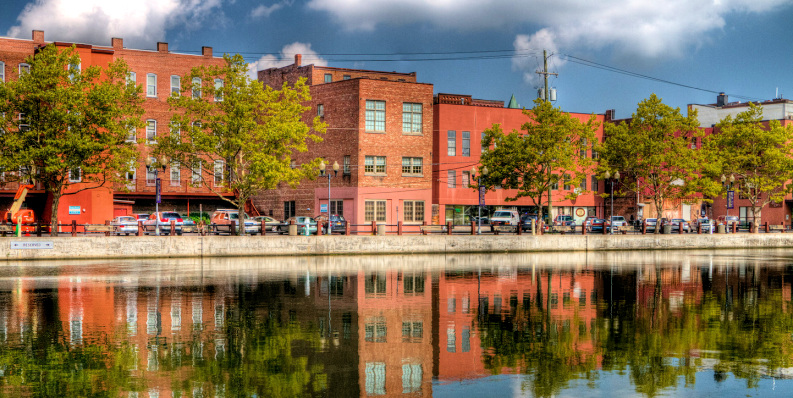
The first white settlers along the Seneca River arrived in the area in the late 18th century. They were part of Sullivan’s March and had seen the potential the area held. Water played an important part in the development of the area. Seneca County, when erected March 24, 1804, originally covered an area extending from the shore of Lake Ontario to just south of Ithaca; a distance of about 63 miles north to south and 11 miles east to west. It was divided into 6 towns: Junius, Fayette, Romulus, Ovid, Hector and Ulysses.
By 1818 canal locks were built along the Seneca River, allowing boat traffic to avoid the rapids. By 1828, the Cayuga-Seneca Canal had been linked to the Erie Canal, making transport of raw materials and finished goods easier and opening up the much larger market for items manufactured locally.On March 26, 1829, the Town of Seneca Falls was organized when the existing Town of Junius was divided in to four towns: Junius, Tyre, Waterloo and Seneca Falls. Business and Industry was attracted to Seneca Falls by the rapids along the Seneca River and potential waterpower they implied. Tanneries, distilleries, mills, and factories of all types sprung up along the river. Landowners along the river became very successful by leasing water rights to a wide variety of industries.

The area originally known as Mynderse Mills officially became the Village of Seneca Falls when it was incorporated on April 22, 1831. Ansel Bascom was selected as the first President of the Village (Mayor). As early as 1841, the Rochester-Auburn railroad system opened the door to the world market for goods manufactured in Seneca Falls.
Seneca Falls was also gaining a reputation for social and religious reform. Abolition of Slavery and the Underground Railroad, the Temperance movement and women’s rights were among issues supported by local residents. On July 19 and 20, 1848 the first Convention on Women’s Rights was held at the Wesleyan Chapel on Fall Street in Seneca Falls. Organized by Jane Hunt, Elizabeth Cady Stanton, Mary Ann M’Clintock and others, it was the birth of the Women’s Rights Movement.
Seneca Falls remained an industrial village well into the 20th century as the home of Gould’s Pumps, Sylvania and Seneca Machine.

In recent years Tourism has become the major industry in Seneca Falls. The Women’s Rights National Historical Park including the site of the first Women’s Rights Convention and the Elizabeth Cady Stanton House, the National Women’s Hall of Fame, the Seneca Falls Historical Society, the Seneca Museum of Waterways and Industry and the Seneca Falls Heritage Area Visitors Center as well as local wineries, the Finger Lakes and beautiful scenery of the Central New York all attract visitors to the Village of Seneca Falls. The Village has recently received attention as the likely inspiration for the fictional village of Bedford Falls in Frank Capra’s holiday classic movie “It’s A Wonderful Life.”
